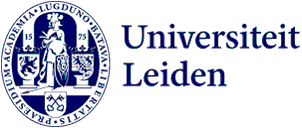Admission requirements
Option 1: Coptic papyrology
This class can be taken in fulfilment of the requirements of both the MA and the Research MA program in Classics and Ancient Civilizations (track Egyptology), with differential requirements.
Required knowledge to take this course: the BA courses Koptisch I and Koptisch II.
Admission requirements for other students: a BA degree in Egyptology obtained from Leiden University, or a comparable qualification obtained from a university outside the Netherlands. Moreover, students with an international degree have to contact the instructor to check admissibility.
Option 2: Bohairic Coptic
This class can be taken in fulfilment of the requirements of both the MA and the Research MA program in Classics and Ancient Civilizations (track Egyptology), with differential requirements.
Required knowledge to take this course: none, but a basic knowledge of Sahidic Coptic is very helpful.
Admission requirements for other students: a BA degree in Egyptology, Classics, Hebrew and Aramaic Studies/Bible studies, Middle Eastern Studies (track Arabic) or religious studies obtained from a university in the Netherlands, or a comparable qualification obtained from a university outside the Netherlands. Moreover, students with an international degree have to contact the instructor to check admissibility.
Description
Option 1: Coptic papyrology
Sahidic Coptic documentary (non-literary) texts, such as letters and official deeds, are important sources for the history of late antique and early Islamic Egypt. Particularly when they are linked to a specific urban or monastic site, they offer glimpses of social life at a local or regional level. Although many of these sources are written on papyrus, texts written on ostraca (pottery fragments, limestone flakes), wood or leather are included in the term “papyrology” as well, since their contents are often similar. During this course, the student will read and study original documentary texts from photographs and learn to edit such sources according to the current standards in Coptic papyrology.
Option 2: Bohairic Coptic
Originally, the use of Bohairic was limited to the western Nile Delta and monastic centres in the Western Desert (and Sahidic was the standard literary variant), but in the eleventh century, Patriarch Christodoulos of Alexandria decided that Bohairic should become the standard form of Coptic used by the Coptic Orthodox Church. It is still in use as a liturgical language. During this course, the student will learn to read simple Bohairic texts, prepare an edition of an original inscription or (part of) a manuscript, and examine the provenance and historical context of that textual source.
Course objectives
Option 1: Coptic papyrology
Acquiring a good working knowledge of non-literary Sahidic Coptic
Acquiring skills for editing documentary texts according to the current standards in Coptic papyrology
Placing documentary texts in their cultural and historical context
Option 2: Bohairic Coptic
Acquiring a good working knowledge of Bohairic Coptic
Acquiring skills for editing Bohairic texts according to the current standards in Coptic papyrology
Placing Bohairic texts in their cultural and historical context
Timetable
Visit MyTimetable.
Mode of instruction
- Seminar
Assessment method
Assessment
Option 1: Coptic papyrology
Class paper (40%)
Written paper (60%) on one or more Coptic papyri
Option 2: Bohairic Coptic
Two intermediate tests on grammar: take home examination (20% each)
Written paper on a Bohairic text (60%)
The requirements for MA and ResMA students are differentiated: ResMA students are expected to come up with their own original research topic, find literature, and write a scholarly report; MA students may expect more help in choosing their topic and their papers may consist of an assessment of the status quaestionis on a given question.
Weighing
The final grade for the course is established by determining the weighted average.
Resit
Should a mark for an intermediate test be unsatisfactory, the student is offered a third intermediate test, and the two best marks count (Option 2 only).
Should the overall mark be unsatisfactory, the written paper is to be revised after consultation with the teacher (both options).
Inspection and feedback
When partial and final grades are published, students will receive scans of their intermediate tests and/or the evaluation forms for their oral presentation/paper. Students will be given the chance to inspect the originals, if they make a request within 30 days of the publication of the results.
Reading list
Option 1: Coptic papyrology
Guide to Academic Skills for students of Classics and Ancient Civilizations, Leiden University 2018-2019.
J.-L. Fournet, ‘The Multilingual Environment of Late Antique Egypt: Greek, Latin, Coptic, and Persian Documentation’, in: R.S. Bagnall (ed.), The Oxford Handbook of Papyrology, Oxford 2009, 418-451.
Option 2: Bohairic Coptic
In order to learn Bohairic in a relatively brief period, it is strongly advised to consult Annette Imhausen’s An elementary Bohairic grammar in advance. It is only available online, at https://www.academia.edu/3623127/Bohairic_Grammar.
Bohairic-English dictionary, available online at http://copticlang.bizhat.com/coptdict.pdf (initiative by an anonymous Coptic author).
Guide to Academic Skills for students of Classics and Ancient Civilizations, Leiden University 2018-2019.
Registration
Enrolment through uSis is mandatory.
General information about uSis is available on the website.
Registration Studeren à la carte en Contractonderwijs
Registration Studeren à la carte.
Registration Contractonderwijs.
Not applicable.
Contact
Remarks
Not applicable.
